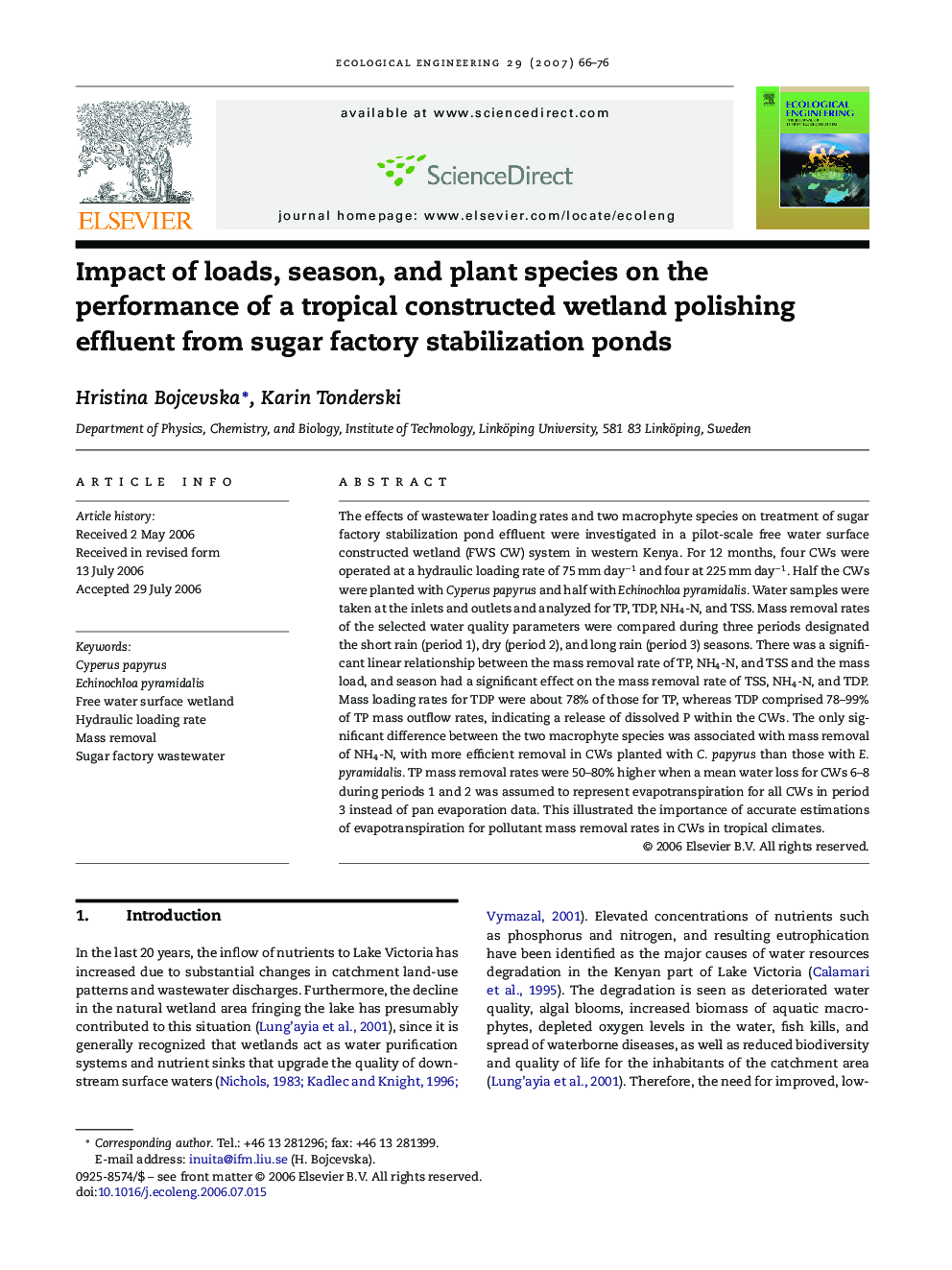| Article ID | Journal | Published Year | Pages | File Type |
|---|---|---|---|---|
| 4391191 | Ecological Engineering | 2007 | 11 Pages |
Abstract
The effects of wastewater loading rates and two macrophyte species on treatment of sugar factory stabilization pond effluent were investigated in a pilot-scale free water surface constructed wetland (FWS CW) system in western Kenya. For 12 months, four CWs were operated at a hydraulic loading rate of 75 mm dayâ1 and four at 225 mm dayâ1. Half the CWs were planted with Cyperus papyrus and half with Echinochloa pyramidalis. Water samples were taken at the inlets and outlets and analyzed for TP, TDP, NH4-N, and TSS. Mass removal rates of the selected water quality parameters were compared during three periods designated the short rain (period 1), dry (period 2), and long rain (period 3) seasons. There was a significant linear relationship between the mass removal rate of TP, NH4-N, and TSS and the mass load, and season had a significant effect on the mass removal rate of TSS, NH4-N, and TDP. Mass loading rates for TDP were about 78% of those for TP, whereas TDP comprised 78-99% of TP mass outflow rates, indicating a release of dissolved P within the CWs. The only significant difference between the two macrophyte species was associated with mass removal of NH4-N, with more efficient removal in CWs planted with C. papyrus than those with E. pyramidalis. TP mass removal rates were 50-80% higher when a mean water loss for CWs 6-8 during periods 1 and 2 was assumed to represent evapotranspiration for all CWs in period 3 instead of pan evaporation data. This illustrated the importance of accurate estimations of evapotranspiration for pollutant mass removal rates in CWs in tropical climates.
Related Topics
Life Sciences
Agricultural and Biological Sciences
Ecology, Evolution, Behavior and Systematics
Authors
Hristina Bojcevska, Karin Tonderski,
